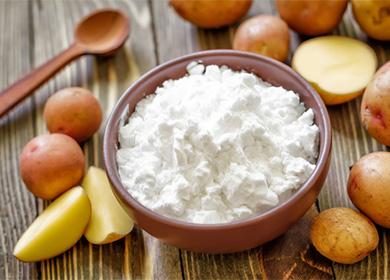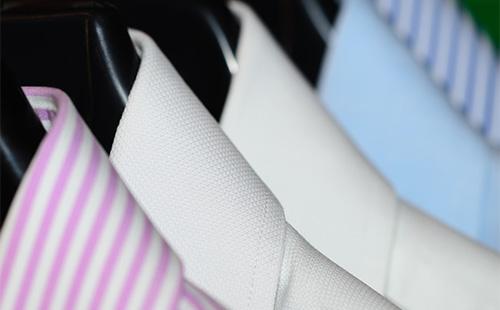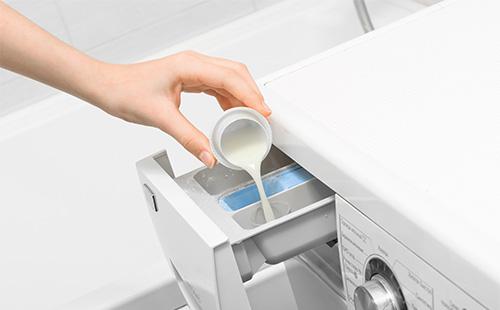The content of the article
The starch procedure has both adherents and ardent opponents. Both the first and second are convincing in their favor. So, the advantages of the procedure include not only a beautiful aesthetic appearance. Starched products are less prone to contamination, retain their shape for a long time and crumple less. All these effects are provided by the film, which is formed on the surface of the fabric and is easily destroyed when the clothes are soaked. But it is this film that makes opponents reject the procedure, because starched fabrics do not allow air to pass through. So, is it worth it to starch or not and how to do it right?
Tips for Starching Things at Home
Why starch underwear? Sometimes starched things do real harm by rubbing the skin. To protect yourself from such a fate, it is important to learn how to properly starch things and tape.
- Consider the fabric. It is recommended to starch linen, cotton. This procedure is applicable for chintz, cambric, calico, satin. However, not all materials are subject to starch. Wool products are not treated with paste. Do not use starch for synthetics. It is undesirable to apply it to dark fabrics. After all, the product may lose its natural color.
- Consider the product. After starching, the breathability of tissues decreases sharply and hard elements are able to rub the skin. Therefore, underwear is absolutely not subject to this procedure. It is not advisable to starch whole summer things. Only skirt, shuttlecocks and other details can be treated with paste solution. If the product has embroidery with mouline thread, it is better to abandon starch. After processing, the threads can stick together and lose their original appearance.
- Choose starch correctly. You can use wheat, rice or corn starch. Anyone you like. But most often, housewives prefer to starch things with potato starch. This product is inexpensive, it thickens well, and, in comparison with corn, differs in white color.
- Adjust the concentration. The technology for preparing a paste solution is completely dependent on the product and fabric. Three degrees of starch processing are distinguished: soft, medium and hard.
What is starch
How to breed starch for starches, and how does the whole procedure go? Initially, agree that if you wash a lot of things, you will need several paste solutions. It is unacceptable to use one paste for both laundry and the cook hat.
Depending on whether you want to starch a thing only a little bit or if you need it to keep its shape firmly, different concentrations of solutions are used (they change the proportions of water and starch). But the sequence of the procedure itself remains unchanged and consists of five steps.
- Starch is poured into a small container and filled with a glass of cold water.
- The mixture is carefully kneaded so that there are no lumps left.
- The remaining recipe is poured into a saucepan and brought to a boil.
- Concentrated starch is poured into the bubbling liquid with a thin stream with constant stirring and the fire is immediately turned off.
- The resulting paste is allowed to cool in natural conditions.
Soft solution
Features The soft method provides elasticity to products, gives a light characteristic crunch. But such a procedure will not allow things to "keep in shape." Such fabric will not be hard to the touch.
Apply for:
- chiffon dresses;
- women's blouses, blouses;
- bed linen;
- medical gowns;
- men's shirts;
- gauze, cambric.
Components:
- starch - two teaspoons;
- water - two liters.
Procedure
- The solution is poured into the pelvis.
- Launched laundry is lowered into the paste, literally for one or two minutes.
- Products are removed and squeezed.
- Then shake and hang to dry.
- When hanging the product, be sure to eliminate all folds and creases.
Medium hardness
Features If lumps form in the starch solution, then it is necessary to filter it before use. You can strain the warm mass through a sieve or gauze.
Apply for:
- napkins, tablecloths;
- covers for furniture;
- curtains;
- shuttlecocks;
- school aprons;
- lace;
- bows;
- denim boots (only light).
Components:
- starch - two tablespoons;
- water - two liters.
Procedure
- To add shine to the product, add half a teaspoon of kitchen salt to the solution.
- The washed laundry is immersed in the paste, removed after a minute and squeezed.
- Hang to dry, smoothing out the folds and shaping.
Saturated paste
Features According to reviews, this recipe can be used without adding borax. In this case, it is recommended to take more starch (plus two tablespoons) and use the classic technology for making the solution.
Apply for:
- collars and cuffs for men's shirts;
- decorative fabric flowerpots;
- packs (skirts) in need of strong fixation;
- petticoats for magnificent dresses;
- caps of the cook or paramedic;
- fabric decorative flowers;
- some crocheted items (e.g. boots).
Components:
- starch - three tablespoons;
- borax - two teaspoons;
- water - two liters.
Procedure
- Starch is bred in a glass of cold water.
- The borax is previously dissolved in a glass of hot water and cooled.
- The remaining water is boiled.
- Starch concentrate is carefully poured into it.
- Then add a solution of borax. The fire is turned off. The mixture is thoroughly stirred.
- For two hours, the paste insist.
The main ways
There are two main ways to starch things. You can give the product elasticity by hand or use a washing machine. But the latter method is completely unacceptable for delicate fabrics or things that require partial processing with a paste.
Manually
This method is suitable for all products that are subject to starch. But in order to slightly facilitate the task, you can use the following recommendations.
- Soak. This is a classic procedure. Wet or dry things are soaked for several minutes in a basin with starch solution. Apply this method if you want to manually starch bedding or other bulk items.
- Brush application. You will need a wide paint brush. A starch solution is prepared in a separate container.A slightly damp product is laid out on a fabric surface. Carefully level it. A brush is applied to the surface of the paste, trying to evenly distribute the solution. The product is allowed to dry completely or ironed in a wet state. This method is applicable for small items (knitted panama, napkins, lace). It is convenient to apply the solution with a brush, processing only individual parts. For example, if you need to starch the collar of a shirt, flounces, cuffs. Most often, the application method is used for hard starching to ensure the shape of the panama hat, ladies' hat.
- Spraying. You can starch the laundry while ironing. But this method is only suitable for mild solutions. Cooked paste, low concentration, is poured into the sprayer. The solution is sprayed onto a cloth, which is immediately ironed. This method is suitable for delicate things, for example, for tulle. You can use a ready-made spray intended for starching clothes during ironing.
In the washing machine
If manual starching seems like a pretty daunting task, then you can trust the work of a smart assistant. How to starch clothes in a washing machine? It is important to know that if a starch solution is used, then no other rinses are added. The procedure includes the following steps.
- Solution preparation. Initially, a paste is prepared for a soft procedure. Ready-made products can be used to starch products.
- Filling the paste. A starch solution, previously diluted with water, is poured into the compartment intended for the air conditioner.
- Washing procedure. Set the desired mode. A final rinse will ensure an even distribution of starch solution. The linen is removed, shaken and hung, carefully straightening all the folds. After starching, the washing machine must be wiped with a damp cloth and then wiped dry.
Features for various fabrics
The starch procedure may vary slightly depending on the tissue. After all, each material needs a special approach. In order for the product to be treated with a paste with high quality, and at the same time not deteriorated, it is recommended to adhere to the following rules.
- Cotton, linen. These fabrics are easily starchable by the usual method.
- Chiffon. Such a fabric requires an extremely delicate approach. Typically, for chiffon things, a soft concentration is considered acceptable. And sometimes even such proportions reduce and take half a teaspoon of starch per liter of water.
- Organza. For starch of organza, it is also recommended to take half a teaspoon of starch. And in order to provide a special shine and elasticity, it is recommended to abandon starch and use gelatin instead.
- Lace. If it is necessary to starch snow-white aprons or napkins, lace tablecloths, it is recommended to use a paste of medium concentration. But for its preparation it is advisable to use milk and rice starch. This combination will allow things to remain snow-white.
- Fatin. This fabric is used for wedding dresses. A veil is sewn of it, dance skirts are made. To give the necessary shape to such products, it is recommended to use a solution of medium or low concentration. Fatin products are dipped in starch solution for literally a few seconds. Then squeeze and carefully straighten.
Important nuances for hats and panama
Usually the starching procedure does not cause any particular difficulties. Even beginners quickly figure out how to starch a shirt, dress or underwear. But when it comes to panama hats and hats, crocheted or knitted, there are minor difficulties. To understand how to properly starch hats, use the following tips.
- Hard starching. To give the hat, cap or panama hat the required shape, a highly concentrated starch solution is recommended. According to this principle, it is recommended to starch the cap of the cook or paramedic.
- The cold method. It must be borne in mind that some types of yarn can stretch from exposure to high temperatures. For such products, add a tablespoon of starch to a cool liter of water and mix thoroughly. If necessary, paste paste. In the resulting solution put a knitted hat for half an hour.
- Shaping. If we are talking about a lacy napkin, then it is enough to stretch it on the surface. But how to ensure the volume or waviness of a hat or cap? For such purposes, you can use any means at hand. For example, to provide a deepening of the hat, it can be pulled over a jar, pan or flowerpot. Pencils, large curlers or regular plastic bottles provide playful undulations.
Alternative methods
To stiffen the product, it is not necessary to use starch. This product can be replaced with gelatin, sugar and even glue. For example, a material such as an atlas from the effects of starch can acquire a characteristic yellowish tint. Therefore, to give the necessary shape for this fabric, only gelatin is used.
Sugar
Components:
- sugar - 100 g;
- water - 200 ml.
Procedure
- Initially, boil the syrup by dissolving sugar in water.
- The liquid must only be brought to a boil and immediately removed from the heat. Take care that the syrup does not turn yellow. Otherwise, it will become unusable.
- With this method, you can starch knitted boots, panamas.
Gelatin
Components:
- gelatin - one teaspoon;
- water - one glass.
Procedure
- Gelatin is dissolved in a small amount of cold water.
- When the crystals are swollen, the remaining liquid is added to them.
- The mixture is put on fire and, with constant stirring, brought to a boil.
- The solution is slightly cooled and used for starching products.
- This method provides the shape of hats, vases.
Glue
Components:
- PVA glue - two tablespoons;
- water - four tablespoons.
Procedure
- The glue is diluted with water and mix well.
- It is better to apply means with a brush.
- This method is used to give the necessary shape to embroidery fabrics or knitted products.
There is another good way to starch a fabric without starch. Silicate glue can be used for delicate products and silk. To prepare the solution, the components are mixed in the following proportions: one teaspoon of silicate glue per five liters of water.
Starch or buy ready-made fixative solution: reviews
Starch for clothes is already the last century. Now in any hardware store a special tool for starches is sold. Large bottle (such as hairspray, only more). When you iron the laundry, you poke on it with this tool. Everything is simple!
Amorca, http://www.woman.ru/home/medley9/thread/3906531/
My grandmother made very sweet water (with sugar). Hold your products in this solution and dry in the form you need. all is ready. Sugar crystals should remain on the strings. Good luck.
Hope, http://www.woman.ru/home/medley9/thread/3906531/
As a child, I remember that my grandmother starched the tulle curtains after washing and stretched them on a large hoop. And the bedding, remember, almost everything was white and even with embroideries and lace ... it was starched so that it was easier to wash later (starch did not allow the laundry to get so dirty so much, it’s a smooth surface), and now there’s no need for it — everything is simplified for life and many don’t iron linens and towels at all.
Lagoon, https://lady.mail.ru/forum/topic/vy_krahmalite_bele/?page=3#topic-form
I do not use starch for all things, but there are things that require it. I remember it was necessary to starch the ears of a hare on a matinee. So I put a hat with ears only in a thick mixture of starch. Really stood like a bell!
Anonymous, http://sovet.kidstaff.com.ua/question-9082




